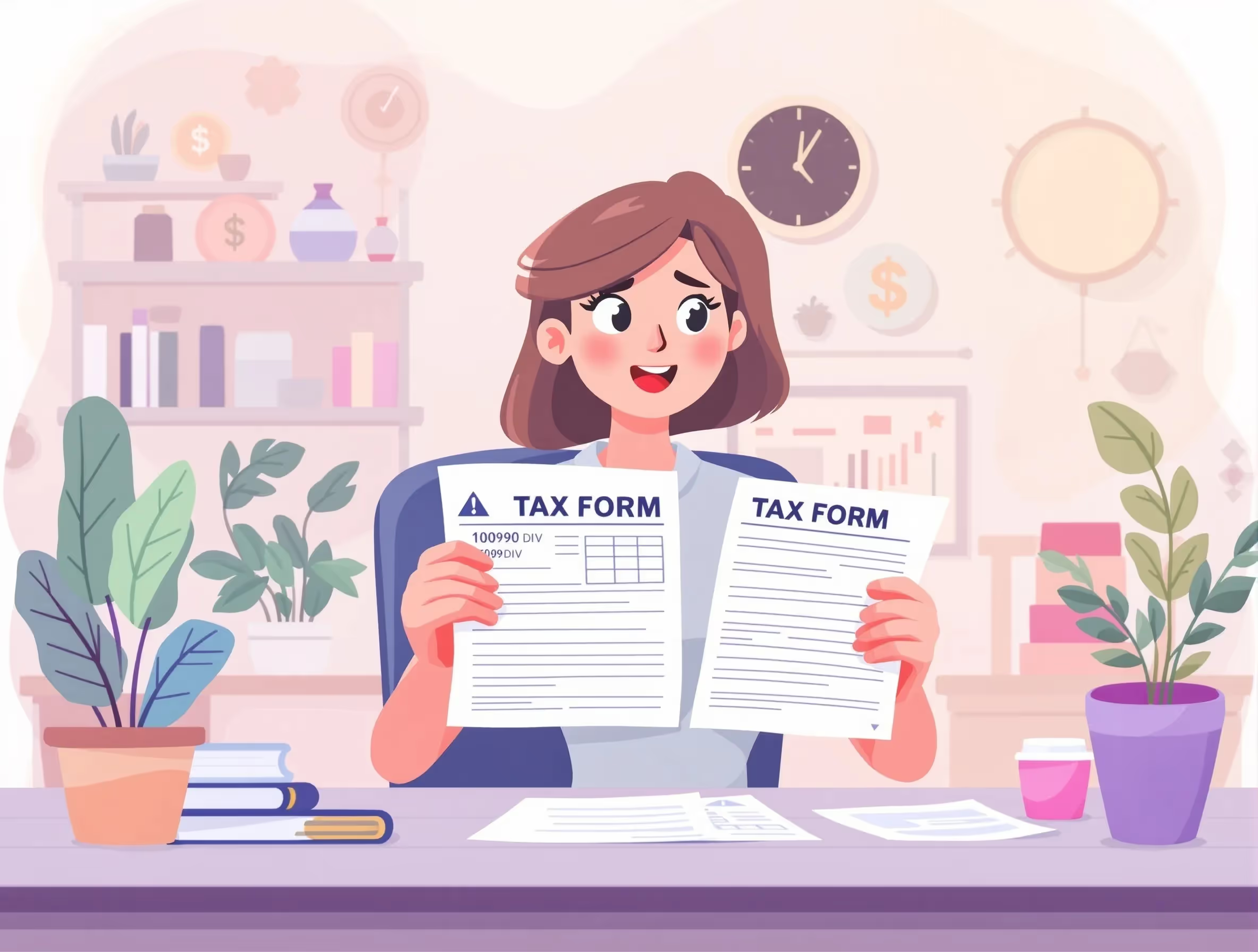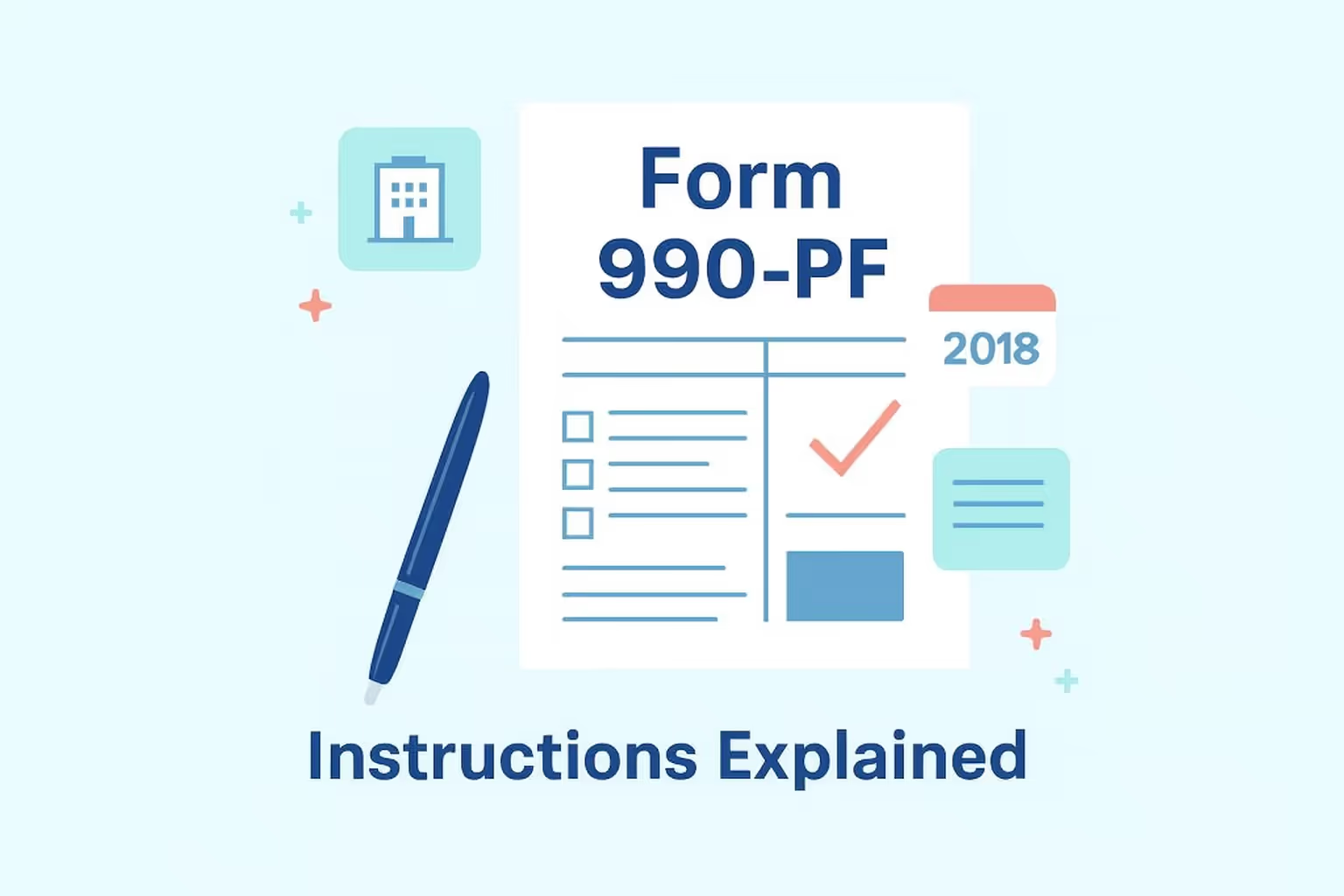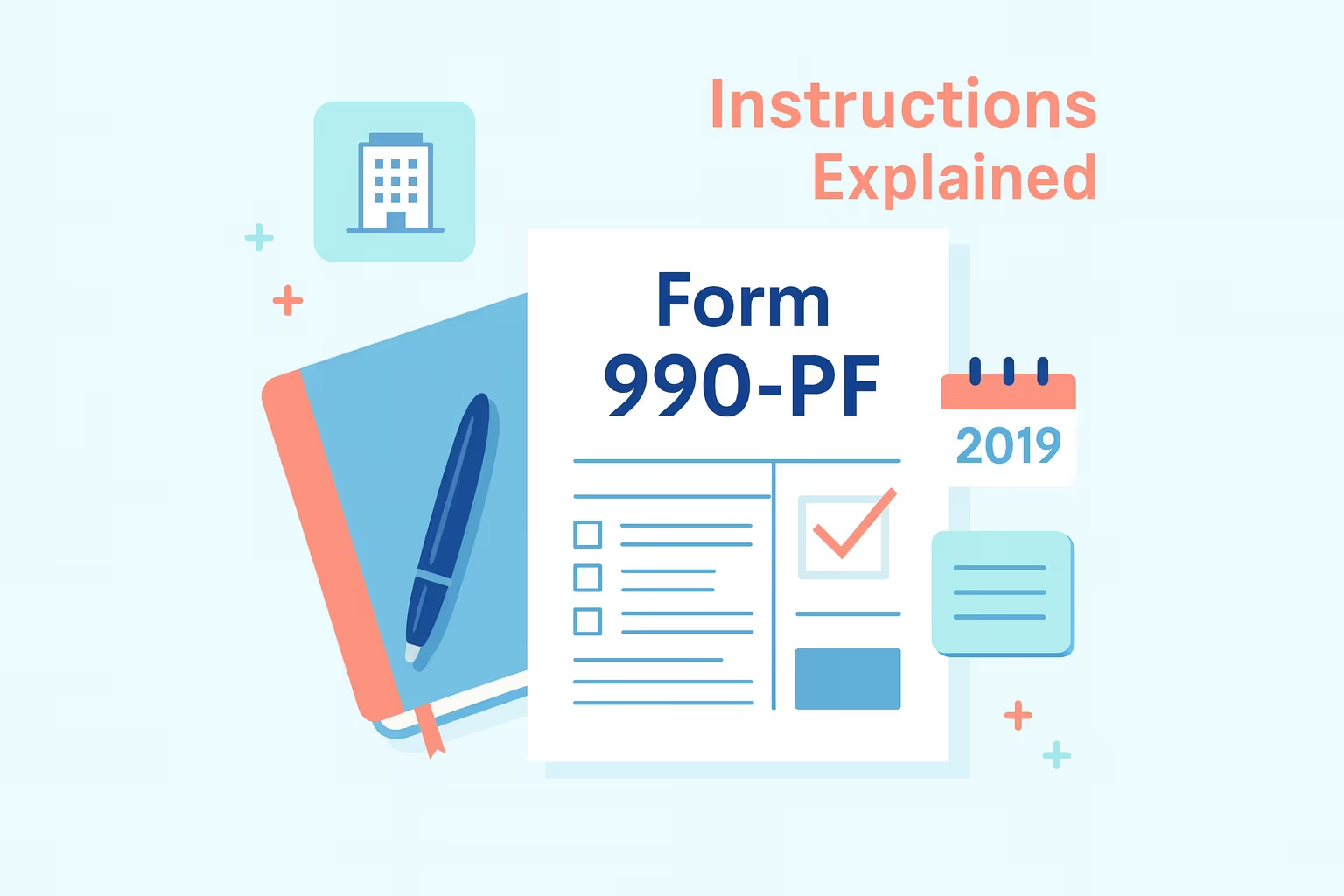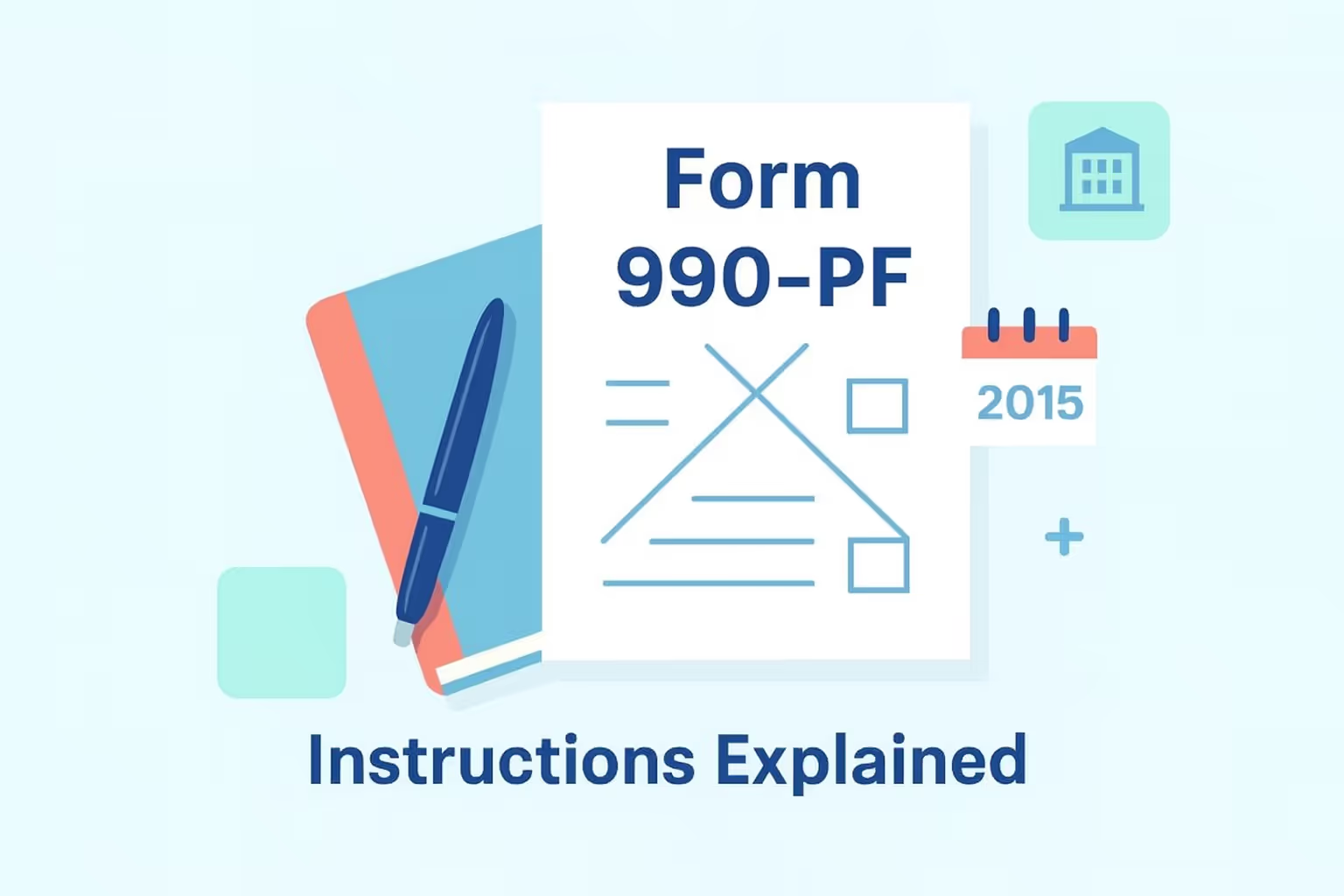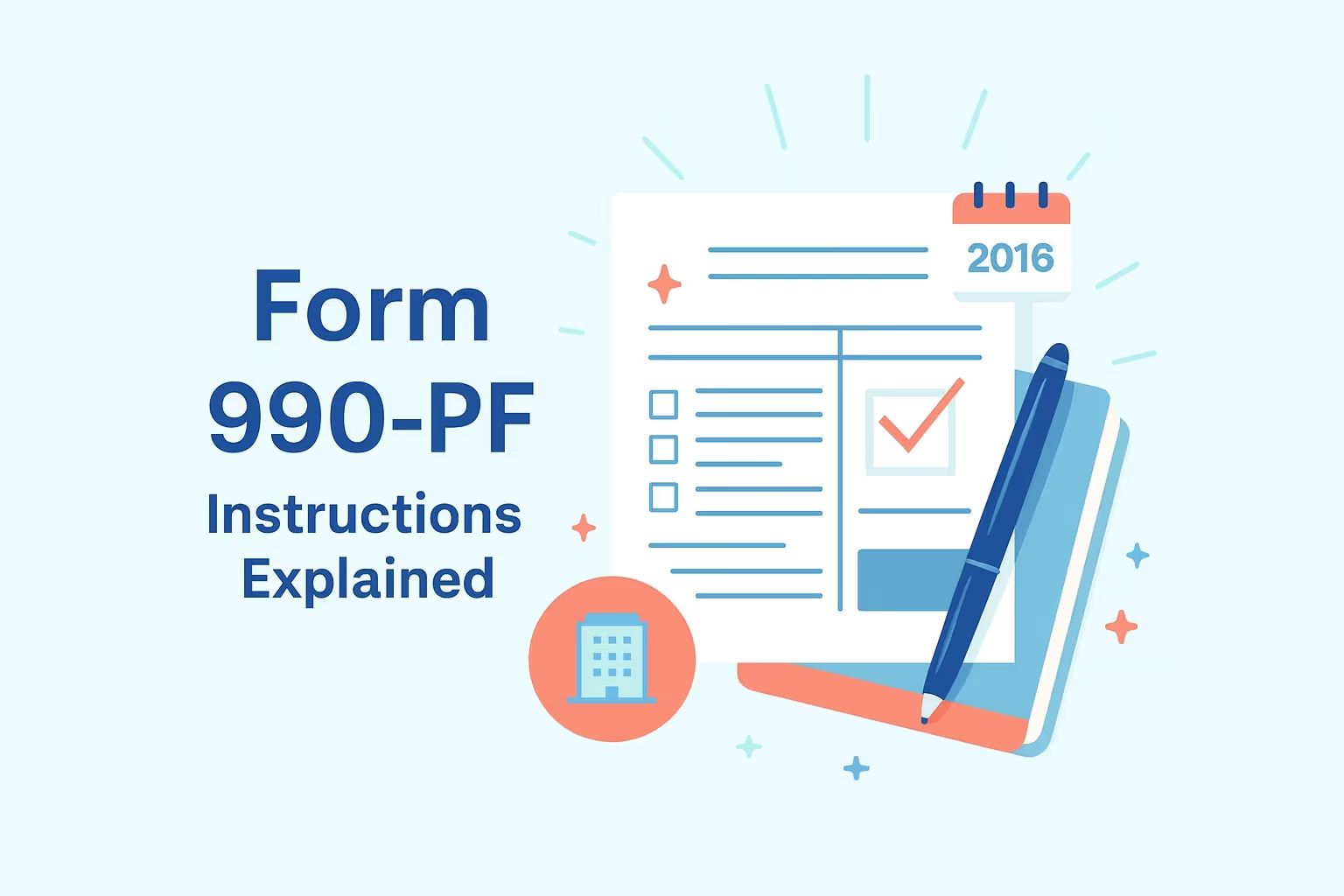
What IRS Form 990-PF (2017) Is For
IRS Form 990-PF for the 2017 tax year is the annual return that every private foundation and nonexempt charitable trust treated as a private foundation must file. It reports investment income, net investment income tax, charitable distributions, and excise tax for the foundation’s tax year, which began in 2017. The form also helps the Internal Revenue Service verify that the organization has met the qualifying distribution rules, maintained its exempt status, and properly reported its income, assets, and administrative expenses.
When You’d Use Form 990-PF for 2017
You use the 2017 Form 990-PF when filing an original, late, or amended return for that tax year. A late filing occurs when the foundation missed the original or extended deadline and must now correct tax liability, investment income reporting, or charitable distributions. An amended return is required when you revise net assets, capital gains, adjusted net income, or any other part of the return affecting income taxes or excise tax-based requirements.
Key Rules or Details for 2017
- Excise tax rate: The 2017 return applied a two percent excise tax on net investment income, and some foundations qualified for a reduced one percent rate after meeting specific distribution requirements. Each filer was required to confirm their eligibility to ensure accurate unpaid tax calculations.
- Minimum payout requirement: Private foundations were required to distribute at least five percent of their average investment assets for charitable purposes; failure to meet this minimum resulted in undistributed income that was subject to penalties. Organizations needed strong documentation to show qualifying distributions.
- Income reporting rules: The form required complete reporting of interest income, capital gains, unrelated business income, and tax-exempt interest, with specific instructions for each category. Foundations needed to verify gross income and report income accurately.
- Restrictions and compliance: The 2017 form required reporting of prohibited tax shelter transactions, certain personal benefit contracts, and excess business holdings to maintain exempt status. Accurate disclosures protected foundation managers from penalties.
Browse more tax form instructions and filing guides in our Forms Hub.
Step-by-Step (High Level)
Step 1: Gather financial and distribution records
Collect investment income statements, financial accounts, mutual fund reports, charitable contribution documentation, foreign bank records, and any materials supporting adjusted gross income or adjusted net income. This information ensures correct reporting for net income, capital gains, professional fees, and related expenses.
Step 2: Use the correct 2017 version
Use the actual 2017 Form 990-PF because tax-based rules differ by tax year. Later forms include changes not applicable to 2017, particularly those related to excise tax, minimum investment return, and qualifying distribution rules.
Step 3: Calculate net investment income and excise tax
Complete the section that determines net investment income using interest income, capital gain net income, and financial instruments affected by the year’s rules. Apply the correct excise tax percentage and verify whether reduced rates apply to your private foundation.
Step 4: Confirm minimum investment return and payout
Calculate the minimum investment return using the foundation’s annual fund balance and average net assets. Confirm whether charitable distributions met the qualifying distribution requirement to avoid undistributed income penalties under federal income tax rules.
Step 5: Complete schedules and disclosures
Prepare explanations for prohibited tax shelter transactions, direct charitable activities, administrative expenses, foreign foundation involvement, and any nonexempt charitable trust treated as a private foundation. Attach Schedule B and other schedules that document contributors and philanthropic purposes.
Step 6: File and securely retain records
File the 2017 return by mail or electronically when allowed, and mark amended returns clearly. Retain copies, tax-paid records, and tax advice for at least three years in case the Internal Revenue Service requests clarification, especially regarding foreign country activities or personal benefit contracts.
Learn more about federal tax filing through our IRS Form Help Center.
Common Mistakes and How to Avoid Them
- Incorrect tax rate selection: Some filers apply the reduced excise tax rate without verifying the qualifying distribution requirement, which can lead to underpaid tax liability and potentially result in later IRS notices. Filers avoid problems by checking payout records before completing the form.
- Missing investment income entries: Foundations sometimes overlook capital gain income or tax-exempt interest; however, reviewing all financial instruments ensures that investment income is reported correctly. Complete reporting prevents incorrect calculations of the net investment income tax.
- Failure to track qualifying distributions: Errors occur when charitable distributions are misapplied to the wrong tax year, but confirming the foundation’s tax year beginning date helps avoid incorrect payout results. Using accurate records ensures compliance with the qualifying distribution.
- Incomplete disclosures of activities: Some filers skip reporting prohibited tax shelter transactions or administrative expenses; however, checking each schedule requirement helps maintain exempt status. Thorough documentation supports the foundation’s charitable purposes.
- Incorrect classification of private foundation status: Filers occasionally misidentify taxable private foundations or exempt private foundations; however, confirming classification can help avoid penalties. Accurate status reporting ensures that the Internal Revenue Service receives correct information.
Learn more about how to avoid business tax problems in our guide on How to File and Avoid Penalties.
What Happens After You File
After filing, the Internal Revenue Service processes the return and may request additional information about charitable purposes, fund balances, foreign foundation involvement, or unrelated business income. They may issue notices regarding unpaid tax, estimated tax requirements, or undistributed income. Once accepted, Form 990-PF becomes a public record, disclosing how the foundation utilized its assets, maintained its exempt status, and made charitable distributions.
FAQs
How does IRS Form 990-PF 2017 reporting affect minimum investment return calculations?
Filers use net assets and statutory threshold amounts to calculate the minimum investment return, and accurate reporting ensures the foundation meets its payout obligation for the tax year.
Why does Form 990-PF require reports of capital gains and net income?
The form requires reporting capital gain and net income to calculate net investment income tax and excise tax-based liability, and complete reporting supports compliance with federal income tax rules.
How do private foundations handle estimated tax for excise tax-based requirements?
Private foundations pay estimated tax when tax remains unpaid during the year, and submitting payments on time helps avoid penalties. Payment rules apply even when the foundation has exempt status.
How should foundation managers report undistributed income on Form 990-PF?
Foundation managers report undistributed income in the appropriate section to demonstrate compliance with qualifying distribution rules. Accurate completion helps avoid penalties for failing to distribute required amounts.
Why must foundations report net assets and administrative expenses each tax year?
Reporting net assets and administrative expenses ensures that the Internal Revenue Service can confirm the foundation used its resources for charitable purposes. Complete information also supports transparency for tax-exempt organizations.
How does excise tax-based reporting apply to a private foundation with exempt status?
A private foundation with exempt status still pays excise tax on net investment income, and filing the 2017 form shows how the tax-based calculation applies to the foundation’s activities.
Why does reporting a prohibited tax shelter matter for the foundation’s tax year beginning in 2017?
Reporting a prohibited tax shelter transaction helps the Internal Revenue Service confirm the foundation did not violate rules that threaten its exempt status, and complete disclosure protects the organization from penalties.
For more resources on filing or understanding prior-year IRS forms, visit our guide on Nonprofit & Exempt Organization Forms.






